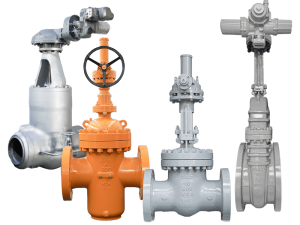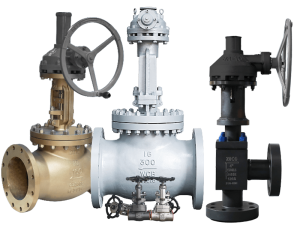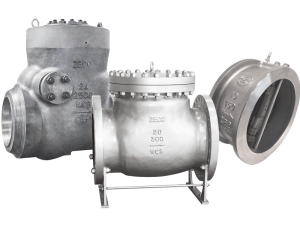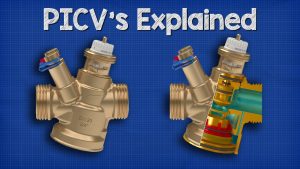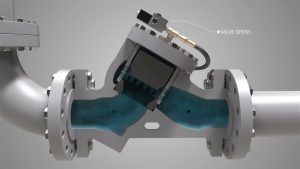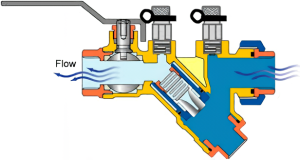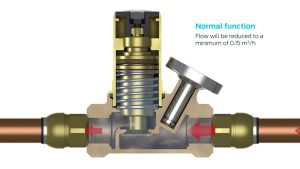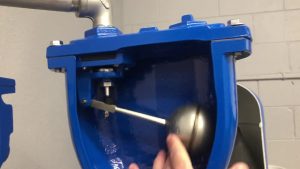Вы когда-нибудь замечали, что ваш насос для скважины включается и выключается, как будто занимается кардио?
А может быть, напор воды падает быстрее, чем свинцовый шарик?
Дело вот в чем:
Ваш обратный клапан может оказаться неудачным. И поверьте мне, это не то, что вы хотите игнорировать.
В этом руководстве я покажу вам как проверить обратный клапан на скважинном насосе системы. Никакой пушистости. Только практические шаги, которые действительно работают.
Давайте погрузимся.

Оглавление
- Что такое обратный клапан (и почему он должен вас волновать)?
- Как проверить обратный клапан на скважинном насосе
- Когда нужно заменить, а когда отремонтировать
- Поиск и устранение неисправностей
- Итоги испытаний обратных клапанов
Что такое обратный клапан (и почему он должен вас волновать)?
Прежде всего:
Обратный клапан - это, по сути, односторонняя дверь для воды. Он пропускает воду вверх из колодца, но не дает ей стекать обратно.
Подумайте об этом так:
Без работающего обратного клапана каждый раз, когда ваш насос отключается, вся вода из труб устремляется обратно в скважину. Нехорошо.
И вот тут становится интересно:
Большинство колодезных систем имеют несколько обратных клапанов. Один может находиться на насосе, другой - на полпути вверх, и еще один - на устье скважины.
Почему их так много?
Простота. Каждый клапан должен выдерживать только часть веса водяного столба. Это снижает износ (и экономит ваши деньги в долгосрочной перспективе).
Как проверить обратный клапан на скважинном насосе
Красные флажки: ваш обратный клапан поджарился
Прежде чем перейти к тестированию, давайте поговорим о симптомах.
Потому что дело вот в чем:
Неисправный обратный клапан обычно подает предупреждающие сигналы до того, как он полностью выйдет из строя.
Признак #1: ваш насос не перестает работать
Это самое важное.
Когда обратный клапан выходит из строя, вода после отключения насоса поступает обратно в скважину. Давление падает. Насос снова включается.
Промойте и повторите.
Я говорю о том, что насос срабатывает каждые 30-60 секунд. Даже когда никто не использует воду.
(И да, ваш счет за электричество будет ненавидеть вас за это).
Признак #2: напор воды, который повсюду
В одну минуту у вас приличное давление. А в следующую? Это все равно что пытаться принять душ под протекающим садовым шлангом.
Это происходит потому, что ваш напорный бак не может поддерживать постоянное давление, когда вода продолжает просачиваться обратно через плохой обратный клапан.
Знак #3: страшный водяной молот
Вы когда-нибудь слышали громкий звук "БАНГ", когда ваш насос отключается?
Это гидроудар.
Это происходит, когда столб воды внезапно меняет направление и врезается в закрытый обратный клапан. Это громко. Это раздражает. И это может повредить ваши трубы.
Тест на перепад давления (ваш основной метод тестирования)
А теперь о главном событии:
Тест на перепад давления - самый простой способ проверить, работает ли ваш клапан.
Вот как это сделать:
Шаг 1: Найдите манометр (обычно он находится на баке или рядом с ним).
Шаг 2: Найдите запорный вентиль между напорным баком и домом. Закройте его.
Шаг 3: Пусть ваш насос работает до тех пор, пока не достигнет давления отключения и не отключится автоматически.
Шаг 4: Следите за манометром как ястреб.
Вот что вы ищете:
- Давление остается стабильным = Ваш обратный клапан, вероятно, в порядке
- Давление медленно падает = Хьюстон, у нас проблема
Ключевое слово здесь - "медленно".
Если давление падает сразу, возможно, у вас другая проблема (например, большая утечка). Но постепенное снижение в течение 5-10 минут? Это классическая неисправность обратного клапана.
Альтернативные методы тестирования, которые действительно работают
Тест на падение давления не всегда говорит о полной картине.
Вот несколько других способов проверить обратный клапан:
Звуковой тест
Выключите насос и внимательно прислушайтесь к устью скважины.
Слышите шум воды или бульканье? Это вода течет в обратном направлении через неисправный обратный клапан.
(Совет: для этого отлично подходит стетоскоп механика. Его можно купить за 10 баксов).
Испытание потоком
Этот вариант прост, но эффективен:
- Наберите воду из крана
- Внезапно выключить кран
- Послушайте, не раздаются ли из скважины щелчки или стук.
Многочисленные щелчки обычно означают, что несколько обратных клапанов выполняют свою работу. Щелчков нет? Возможно, клапан заклинило.
Тест на потребление ампера
У вас есть клещи? Отлично.
Измерьте потребляемый насосом ампер при первом запуске. Неисправный обратный клапан означает, что насосу приходится прилагать больше усилий для создания давления (поскольку он начинает работать с нуля).
Более высокое, чем обычно, потребление тока = потенциальная проблема с обратным клапаном.
Что делать с несколькими обратными клапанами?
Вот тут-то и возникают сложности:
Если у вас несколько обратных клапанов (что часто встречается в глубоких скважинах), испытания усложняются.
Почему?
Потому что верхние клапаны могут маскировать проблемы с нижними.
Например:
Ваш нижний обратный клапан может быть полностью разрушен. Но если средний клапан исправен, вы можете не заметить падения давления при тестировании.
Решение?
Начните с самого легкодоступного клапана (обычно на устье скважины). Если он окажется в порядке, но симптомы останутся, возможно, придется вытащить насос, чтобы проверить более глубокие клапаны.
(Да, я знаю. Именно тогда большинство людей обращаются к профессионалам).
Когда нужно заменить, а когда отремонтировать
Скажу прямо:
Обратные клапаны обычно заменяют, а не ремонтируют.
Конечно, иногда мусор застревает, и его можно вычистить. Но по моему опыту? К тому времени, когда обратный клапан проявляет симптомы, он уже готов.
Хорошие новости:
Качественный латунный обратный клапан стоит от $30-100. Это гораздо дешевле, чем сжечь насос от постоянного циклирования.
Советы по установке, которые спасут ваш бекон
Если вы заменяете обратный клапан, вот что вам нужно знать:
Используйте Тефлон лента на нити. Но не переусердствуйте. Не более 2-3 витков.
Проверьте направление потока. Обычно на корпусе клапана есть стрелка. Установите его в обратном направлении, и давление воды будет нулевым.
Рассмотрите возможность модернизации перейдите на пружинный клапан, если вы все еще используете старую конструкцию с поворотным затвором. Пружинные клапаны закрываются быстрее и уменьшают гидроудар.
Поиск и устранение неисправностей
Иногда тестирование выявляет проблемы, которые на самом деле не связаны с обратным клапаном.
Вот как отличить их друг от друга:
"Мое давление падает даже с новым обратным клапаном".
Может быть:
- Утечка в капельной трубе
- Плохой пузырь напорного бака
- Изношенные уплотнения насоса
"Я слышу щелчки, но у меня по-прежнему проблемы с давлением".
Возможно, клапан работает, но с ограничениями. Минеральные отложения могут снижать поток, не полностью перекрывая клапан.
"Мой колодезный насос работает постоянно".
Прежде чем обвинять обратный клапан, проверьте настройки реле давления. Иногда давление включения и отключения слишком близко друг к другу.
Итоги испытаний обратных клапанов
Смотрите:
Проверка обратного клапана - это не ракетостроение. Но это одна из тех задач по техническому обслуживанию, которая может сэкономить вам тысячи на ремонте насоса.
Тест на перепад давления занимает около 10 минут. И он сразу же покажет вам, есть ли у вас проблема.
Мой совет?
Ежегодно проверяйте обратный клапан. Отметьте это в календаре. Установите напоминание в телефоне. Что угодно.
Потому что это правда:
Замена обратного клапана $50 в любой день недели выигрывает у замены насоса $2,000.
Будьте проактивны, регулярно проводите испытания, и ваша скважинная система отблагодарит вас годами надежной работы.
Теперь вы точно знаете. как проверить обратный клапан на скважинном насосе системы как профессионал. Больше никаких догадок. Больше не нужно думать, почему ваш насос не перестает работать.
Простое, эффективное тестирование, которое приносит результаты.


